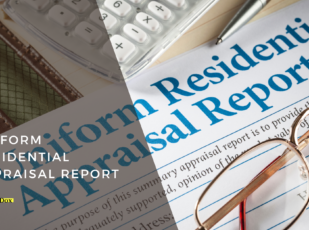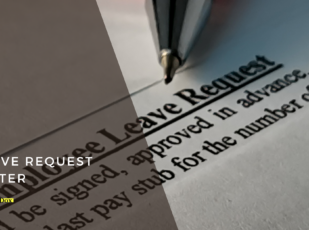
Letter of Intent Template for Business Transactions
19 Downloads
Commercial, Corporate
November 27, 2024
Sayantani Dutta
Business transactions are often very complex. When transacting together, two businesses are highly likely to have created, shared, and co-signed multiple documents between them. But it all begins with laying the groundwork, outlining the rough expectations or deliverables, and establishing a clear scope of work for both entities. And that is where a Letter of Intent or LOI comes into play. An LOI is an important document that guides two parties in a business transaction toward a mutual understanding and a potentially fruitful collaboration.
Note that a Letter of Intent is a precursor document. It is often the forerunner to a more formal agreement or subsequent agreements. Typically, businesses use an LOI to lay down the groundwork for acquisitions, mergers, or strategic partnerships. Within the LOI, you have everything that both businesses need to begin the journey toward shared success.
We’re going to break it down further in the following section and tell you how to create an ideal Letter of Intent. As a nice surprise, we even have a customizable, easy-to-use Letter of Intent template in PDF for your use!
Letter of Intent: Uses & Benefits
A Letter of Intent is a formal document that signifies a serious intention to carry out certain business transactions between two entities. Typically, such a document outlines the basic terms and conditions under which negotiations will proceed. The idea is to have a structured path for due diligence, negotiations, and ultimately, a definitive agreement. LOIs are more than a ceremonial gesture—they are a strategic tool that aligns the interests of both parties.
Without an LOI, it’s impossible to ensure that both parties will have future agreements in good faith. That’s why it’s considered vital for establishing trust and cooperation. The way an LOI achieves this is by putting into words the preliminary understanding and expectations for both parties. It can also extend to minimize any kind of misunderstandings and offer a clear framework for all future discussions and agreements.
Complex transactions between businesses often involve the examination (and agreement on) various facets of the businesses and partnerships. And LOI simplifies this whole thing and gives everybody a foundation to work off of. These matters can be about creating a binding obligation for a business deal, settling on some final agreement points, purchase agreement for assets, buying up liabilities at a particular purchase price, co-buying real estate in one company name for both businesses, and so on. Of course, some matters are more complex—requiring a more detailed course of action for the proposed transaction within the governing laws, subject to the approvals of the board members and executives.
If one were to summarize the benefits of a Letter of Intent, there would be three key ones:
- Legal Foundation for Negotiations: An LOI formalizes an intent for businesses to engage. It has a legally sound and well-structured basis for discussions, confirming that both parties are serious and ready to allocate necessary resources (time and money) toward due diligence and further talks.
- Protection of Confidential Information: You cannot get in bed with another business without first making sure that your trade secrets, financial data, and other sensitive information are safeguarded first. In a way, a Letter of Intent functions similarly to an NDA. It has confidentiality clauses to secure proprietary and sensitive information so that nobody has to worry about a leak or misuse of such data.
- Streamlined Negotiations: The whole negotiation process is streamlined by a lot if there is an LOI backing them. This is because the LOI identifies key terms early on—deal valuation, structure, expected timelines, and so on. The businesses can look back at the LOI as a roadmap of sorts, which makes further negotiations more efficient because there is clear guidance to keep discussions aligned with the initial goals of the transaction.
A document such as this can outline the intention of the parties. Though it’s not about setting things in stone, it is a good way to get a starting point. When both businesses know that their intents and objectives are legally safeguarded, they can get into business much more efficiently. An LOI can contain a lot of things in it. For example, it can be as little as just a non-binding agreement between two parties for a potential transaction that might not even come to fruition. On the other hand, LOIs can also include a bunch of stuff ranging from a specific timeframe, a memorandum of understanding, and certain warranties to a non-disclosure agreement, binding provisions for future negotiations, and confidentiality provisions.
It’s a formal contract that can be as simple or as detailed as both parties want it to be. Often, the complexity of the business deal itself determines how detailed the Letter of Intent between the two businesses will be.
Challenges with a Letter of Intent
LOIs are remarkably beneficial. We saw the way they work and how they can make negotiations and complex business transactions much more streamlined and structured. But they have their fair share of difficulties as well. For once, drafting an LOI requires careful consideration. A business might not immediately foresee it, but certain terms in a legally binding agreement can lead to unintended commitments from either party. That’s why striking the right balance between detail and flexibility is the #1 priority when drafting a Letter of Intent.
There has to be enough specificity (based on brainstorming all potential consequences) such that the LOI can guide further negotiations correctly while also offering some room for adjustments as more information becomes available or circumstances change over time.
One of the challenges in drafting an LOI is determining its binding and non-binding sections. Typically, terms related to confidentiality and exclusivity are binding, while the substantive terms of the deal remain non-binding until a definitive agreement is reached. Businesses can get into a hot mess if they do not clearly articulate this very important distinction between the two things—potentially leading to severe legal ambiguities that can be exploited.
That’s why it’s very important to have clear definitions, a point of contact with contact information for any grievances (from both parties), detailed FAQs, some legal advice on how to tackle uncertainty or disputes (shall they arise), any confidentiality agreement that either party believes to be of importance, and a mandated due diligence process. The complete of due diligence is critical. That’s the only way to fulfill legal obligations and respect a legally binding contract. Otherwise, you want to go with a non-binding Letter of Intent—this is for fairly simple subject matter that only covers certain guiding principles or business directives.
Letter of Intent Templates
Creating a comprehensive and legally sound LOI can be daunting, especially for those without a legal background. This is where FreshDox.com comes in! Our solution to this problem is to just simplify the process for you. Here at FreshDox.com, we have LOI templates (and other templates regarding business transactions and legal considerations) designed by legal professionals.
You can become a member of FreshDox.com today and gain access to our extensive collection of legal document templates for various business and legal needs. LOI, NDA, or some other legal document—we have you covered with plenty of options in Word and PDF formats. You can grab the intended document, customize it as per your needs, and get it printed ASAP! Basic Plan members can download up to three templates a month and Premium Plan members can enjoy unlimited template downloads from our vast resource. What are you waiting for? Sign up today with our free trial!
Popular searches:
- Letter of Intent Template for Business Transactions pdf
- Letter of Intent Template for Business Transactions sample
- Letter of Intent Template for Business Transactions download
- Letter of Intent Template for Business Transactions format
- Letter of Intent Template for Business Transactions template
- Letter of Intent Template for Business Transactions word
- Letter of Intent Template for Business Transactions free
Related Templates
Discover more templates that align with your needs and preferences.

Ready to Sign Up?
Sign up for FreshDox.com’s 7-day trial and discover why so many individuals and businesses trust us for their legal document template needs.
- Cancel any time
- 7-day free trial
- From 300+ Customer Reviews
















